Porsche designed and built the Porsche 924 for Volkswagen, making its début in 1976 as the 914’s replacement. Neckarsulm is where Audi built the new entry-level model. The 924’s body was designed to maximize aerodynamics. This is why the flat bonnet and pop-up headlamps were devised. MY 1983 added a black rear spoiler, which increased the Cd value even further.
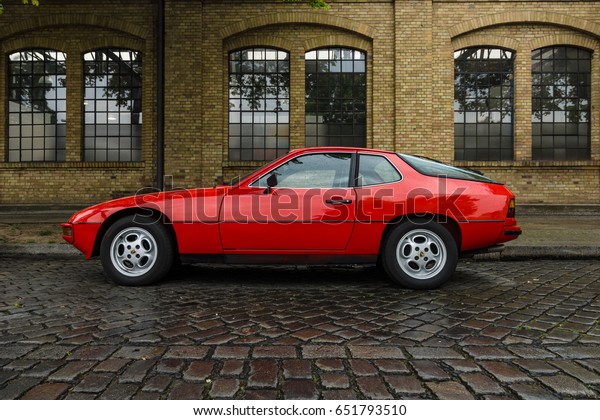
Porsche 924
To capitalize on the 924’s excellent balance and bridge the gap between the standard 924 and 911, Porsche management instantly realized that a more powerful 924 was needed. Porsche opted to utilize turbochargers on the 924 after seeing their benefits on various race cars, particularly the 1975 911 Turbo (930).
In its early days, the 924 Turbo was a massive hit with the automotive and media communities. As a result, it garnered high marks for its performance, handling, and overall quality. Detractors ignored the turbocharged I4’s efficiency and massive power improvement over the n/a car despite its roughness.
According to Motor Magazine, the 924 Turbo was joint second in top speed (averaging an average of 142 mph) and second in the 0-60 mph acceleration (achieving a time of 6,9 seconds) when compared to the Aston Martin V8 (145 mph) and the Porsche 911 (6.5 seconds), a remarkable feat considering the displacement and price differences.
Porsche substantially modified the VW EA831 2.0 L I4 engine already used in the n/a 924 to power the 924 Turbo, deciding to hand-assemble the engine at the Porsche factory in Zuffenhausen, Stuttgart.
A reworked crankcase, connecting rods, cylinder head gasket, crankshaft, and an all-new aluminum-silicon alloy cylinder head were created and installed by Porsche experts.
The compression ratio was decreased to 7.5:1 by using dished combustion chambers and specifically shaped pistons, which helped better accept the KK&K K-26 turbocharger without producing pre-ignition.
Exhaust valve diameter was also enlarged over the n/a engine, and platinum-tipped spark plugs were utilized. At 5,500 rpm, power increased to 170 hp (127 kW) and 181 lb-ft (245 Nm) of torque at 3,500 rpm with ten psi (69 kPa) of boost.
Because the engine component for the 924 Turbo weighed roughly 65 lb (29 kg), front spring rates and anti-roll bars were changed. Compared to the initial 924 figure of 48/52 front to rear, the weight distribution was now 49/51.
To distinguish this model from the standard 924, Porsche added a NACA duct in the hood. This allowed heat to escape when stationary and caused hot air to be sucked out of the engine compartment due to the low pressure created by the louvered alloy engine under-tray when driving.
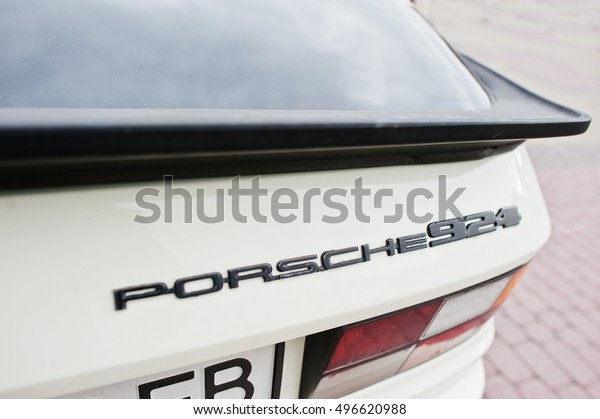
In addition to the NACA duct, the badge panel was adjusted with four slotted air vents, with open ducts added to either side of the front valance to aid in cooling the front brakes.
Standard equipment included:
-
15-inch spoke-style alloy wheels.
-
Four-wheel disc brakes with five-stud hubs.
-
A five-speed racing pattern 'dog-leg transmission.
A more extensive diameter torque tube was used to deliver power from the clutch plate to the gearbox. There was an option for forged 16-inch flat wheels in the style of the Porsche 928.; however, fitment was based on the 911, with which the 924 shared wheel offsets.
The rear hatch was modified with a rubber duck-tail spoiler, which reduced the already low drag coefficient from.36 to.33. Porsche dubbed the 924 Turbo “931” internally, similar to how the 911 Carrera Turbo was dubbed “Type 930.”
Although right-hand-drive parts were designated with the prefix “932,” both left- and right-hand-drive automobiles were referred to as “931,” and this nomenclature is still used by Porsche fans today.
Due to a lighter curb weight, the turbocharged VW EA831 engine allowed the 924 to match the performance of the more significant, more powerful Porsche 928 and come surprisingly close to that of the 911 SC (180 bhp (134 kW)).
Still, it also brought reliability issues, as seen in other turbocharged cars of the era. This was primarily due to the general public’s lack of understanding of operating and maintaining such an early oil-cooled turbo arrangement.
Allowing the engine to idle and the Turbo to cool before shutting it down helps to prevent turbo seal and component failure, extending the Turbo’s lifespan significantly.
Porsche launched a redesigned 924 Turbo Series 2 for the 1981 model year (although badging still read “924 turbos”). Turbochargers with a larger compressor and a smaller turbine, 8:1 compression, including a new DITC (Digital Ignition Timing Control) ignition technology for the fuel injection system. Controlled by the flywheel, they raised peak output to 177 horsepower (132 kW).
The Porsche 924 Turbo debuted in North America in late 1979 for the 1980 model year. Due to legally mandated big bumpers and other safety devices, it was heavier than Euro-spec cars and had less power due to tight emissions controls.
The engine produced 143 horsepower (107 kW), which was roughly 20% less than the European counterpart. Power was boosted to 154 hp (115 kW) for the 1981 model year, and the transmission was changed to a standard H-pattern configuration (North America only).
Before the 924 Carrera GT release, the 924 Turbo had some success in motorsport, primarily in rallying. Jürgen Barth and Roland Kussmaul led an effort to build a competition-spec 924 Turbo between 1977 and 1980.
The competition cars were built from prototype 931s obtained from Porsche by Peter Falk (Ingenieur), the company’s head of motorsport. Modifications included a wider track, Rallye arches, and auxiliary light pods, among others.
Despite being de-specced due to homologation regulations, the car finished fourth in the GT4 class at the 1979 Monte Carlo Rally with Barth and his co-driver Kussmaul at the wheel.
During the 1979 season, the same car and drivers competed in the historic 19,000-kilometer 1979 Round Australia Trial. With a total penalty time of 13 hours and 9 minutes, the car won its class and completed the 134-stage trial in record time.
The 924 Turbo made history in 1981 when it was equipped with a JVC camera inside the cabin, allowing it to capture the first-ever in-car footage of the famed Monte Carlo Rally. This was its final season before being replaced by the intercooler Porsche 924 Carrera GT.
Summary
Porsche 924 Turbo was created to bridge the gap between the standard 924 and 911. Powered by a VW EA831 engine, it produced 180 bhp (134 kW) and came close to that of the 911 SC (180 bhp), but suffered from reliability issues.

Porsche History
An agency partnered with Porsche and Volkswagen to promote and sell sports cars, the Vertriebsgesellschaft (VG), designed the 924. (Ludvigsen: Porsche, Excellence was Expected). “Project 425” was referred to in the early stages of development as Volkswagen’s flagship coupe sports vehicle.
It was conceived as a replacement for the 914, Porsche’s entry-level sports car. Due to an agreement made in the 1940s with the Porsche firm, Volkswagen didn’t have an extensive in-house research and design section for sports vehicles at the time.
As is customary, Porsche was asked to create a new sports car that would be compatible with an existing VW/Audi inline-four engine, in keeping with the tradition.
When Porsche adopted a 48/52 front/rear weight distribution, the rear-mounted transaxle assisted both traction and braking balance by creating a small amount of rear weight bias.
The 425 project was discontinued due to the 1973 oil crisis, the passage of numerous automobile-related legislation modifications in the 1970s, and the shift in Volkswagen directors.
After a lot of deliberation at VW, the Scirocco idea was dropped in favor of the more affordable and practical Golf-based Scirocco.
To find a replacement for the 914, Porsche reached an agreement with Volkswagen management to buy back the design. The Porsche 912E returned to the North American market for a year to fill the void left by the withdrawal of the 914.
According to the agreement, the automobile would be produced in Neckarsulm, north of Porsche’s headquarters in Stuttgart, with Volkswagen as a subcontractor. While Porsche would own the car’s design, Volkswagen personnel would operate on the assembly line (under the supervision of Porsche’s own manufacturing specialists).
Instead of a car show, it was unveiled at a press conference at the port of La Grande Motte in the Camargue region of southern France in November 1975. Porsche was able to make a profit on the vehicle because of its cheap manufacturing costs. One of Porsche’s most popular models even after being criticized for its performance.
The initial concept featured a four-speed manual transmission from an Audi front-wheel-drive automobile that was repurposed as a rear transaxle. It was connected to VW’s EA831 2.0 L I4 engine.
Using the engine of the Volkswagen LT van (from which, according to common belief, the engine originated) and Audi 100(popular perception is that the engine originated in the LT van, however it was first seen in the Audi car and features a Porsche-designed cylinder head in 924 forms).
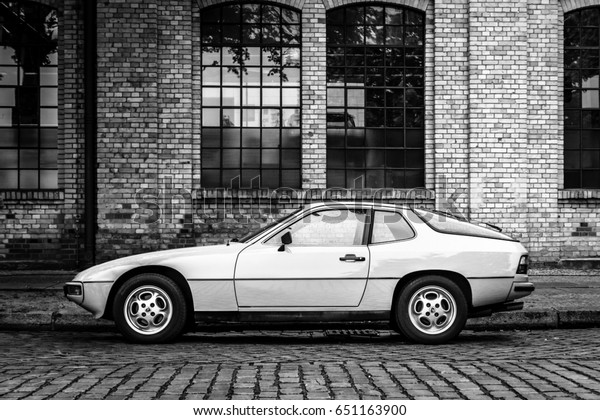
The Audi engine was also utilized in the 1977–1979 AMC Gremlin, Concord, and Spirit and the AMC postal jeeps with a Weber/Holley carburetor. The 924 engine had Bosch K-Jetronic fuel injection in North American trim and produced 95 horsepower (71 kW).
With the introduction of a catalytic converter in mid-1977, this was increased to 110 horsepower (82 kW), reducing the need for power-robbing pollution equipment. For the first 1976 model, a four-speed manual transmission was the only option; later, a five-speed dog-leg transmission was added.
Starting with the 1977.5 model, Audi offered a three-speed automatic transmission. The five-speed transmission was replaced in 1980 with a traditional H-pattern, with reverse now on the right beneath fifth gear.
Minor improvements were made to the model in 1980, including a three-way catalyst and slightly more significant compression, bringing power to 110 hp (82 kW).
Despite this, sales were limited by the strong Deutsche Mark and rising inflation in the United States, as a well-equipped 924 could now easily cost twice as much as the far more powerful Nissan 280ZX.
European models with no emissions equipment produced 123 horsepower (92 kW). They also didn’t have the low-speed impact bumpers and spherical reflectors, as well as side-marker lamps on each end of the body, that the US-spec model did.
Only Mizwa Motors dealerships in Japan specializing in North American and European vehicles could sell the 924. It complied with Japanese government dimensions standards in terms of engine displacement and exterior dimensions aided sales.
Shift patterns with dog-legs The type 016 normally aspirated Porsche had a five-speed transmission available from 1979, and all turbocharged Porsches came standard with one (type G31) with the first gear below reverse on the left side.
Due to the high cost of various 915 internal parts, all non-turbo cars were replaced in 1980 with a standard H-pattern Audi five-speed. Initially, the lighter-duty design was not employed on the more powerful 924 Turbo.
The front brakes were solid discs, and the rear brakes were drums. This braking system, which was seen as a step backward from the 914’s essential four-wheel disc brakes, was condemned in Car & Driver magazine.
Starting with the 1980 model year, four-wheel disc brakes, five-stud hubs, and alloys from the Porsche 924 Turbo were offered as an “S” package on the standard 924. As a cost-cutting approach, standard brakes could be added to the Turbo.
Harm Lagaay, a member of the Porsche style team, developed the folding headlamps, sloping bonnet line, and grille-less snout. And give the car its renowned wedge form. In July 1976, the car was released in the United States as a 1977 model with a starting price of $9,395.
Between 1977 and 1985, Porsche made minor changes to the 924, but there were no significant changes to non-turbo models. Turbocharged models received a slew of non-VW parts throughout the drivetrain.
The M471 disc brake package and forged 16" wheels increased the car’s price by a factor of two. Its design has been regarded as the influence of the Mazda RX-7’s second generation. The 924 was regarded as “the best handling Porsche in the stock form” by J. Pasha in Excellence magazine at the time.
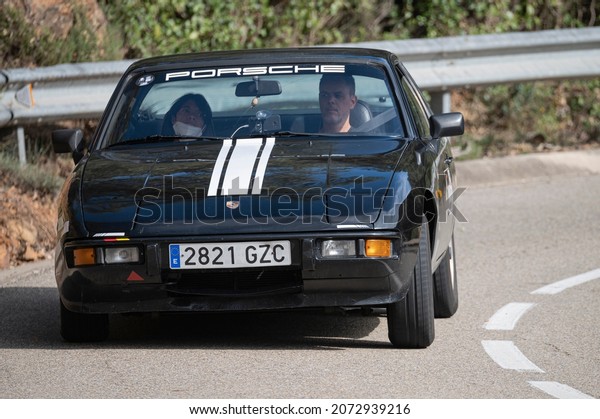
Amidst plaudits for the vehicle’s design and performance attributes, automotive publications slammed it for being underwhelming, particularly in US-spec variants. It was impossible to accelerate quickly, but the Porsche name was associated with greater expectations.
Car and Driver magazine declared the 924 Turbo versions “Fast…at Last!” when they were released. The subsequent 924S featured performance comparable to the Turbo, but with far better dependability and for a lower price.
The 1981 and 1982 Turbos and the corresponding unique versions are gaining popularity among collectors, and while many still exist, quality examples are becoming increasingly scarce. The Porsche 924 was phased out in 1988, with Porsche focusing on the quicker 944 as its entry-level vehicle.
Summary
The 924 was intended to be Porsche’s entry-level sports car. one of Volkswagen’s best-selling automobiles even after receiving criticism for its performance. The 1981 and 1982 Porsche 924 Turbo and 924S are gaining popularity among collectors.
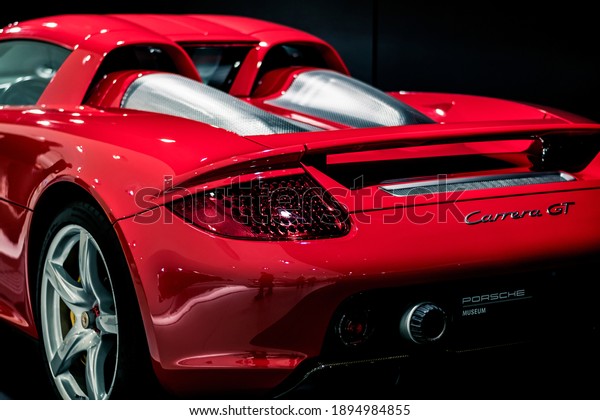
Carrera GT
Carrera-badged 924 concept was shown at Frankfurt Auto Show in 1979 by Porsche. Porsche made the 924 Carrera GT in 1980, a year after the 924 was released.
With the addition of an intercooler and an increased compression ratio to 8.5:1, Porsche was able to turn the 924 Turbo into the race car they desired. The “924 Carrera GT” was the name given to the vehicle.
A total of 406 Carrera GTs (including prototypes) were built to meet Group 4 racing requirements. 75 of the 400 roadgoing cars developed for the UK market are in right-hand drive.
A few numbers of the Porsche 924 Carrera GTS models were made available to the public when the model was introduced in 1981. A total of 59 GTS models were built, all of which were left-hand drives and included 15 race-ready Clubsport models.
Aside from the larger rubber rear spoiler and the flush-mounted front windscreen, the Carrera GT differed from the standard 924 Turbo thanks to its polyurethane plastic front, and rear flared guards, polyurethane plastic front spoiler, and top-mounted intercooler air scoop.
The Carrera GT was distinguished from the original 924 Turbo by a polyurethane plastic front spoiler, a top-mounted air scoop for the intercooler, a somewhat larger rubber rear spoiler, and a flush-mounted front windscreen.
It came standard with Pirelli P6 tires, with Pirelli P7 tires and a limited-slip differential available as options. The NACA duct from the 924 Turbo was removed from the hood, but the air intakes in the badge panel were kept.
Later on, the 944 was inspired by this more aggressive style. The later Carrera GTS was distinguished from the GT by permanent headlamps hidden under Perspex covers (instead of the GT’s pop-up units).
At 1,121 kilogrammes (2,471 lb), GTS models were likewise 59 kg (130 lb) lighter than their GT counterparts, while Clubsport variants were even lighter at 1,060 kg (2,471 lb) (2,337 lb) 210 and 245 horsepower (157 and 183 kW) respectively.
The 924 Carrera GT and 924 Carrera GTS were offered as road vehicles to meet homologation regulations. 280 horsepower (209 kW; 284 PS) Clubsport versions of the GTS were also available, equipped with a Matter roll cage and race seats. Porsche 924 Carrera GT models were given model numbers 937 (left-hand drive) and 938 (right-hand drive).
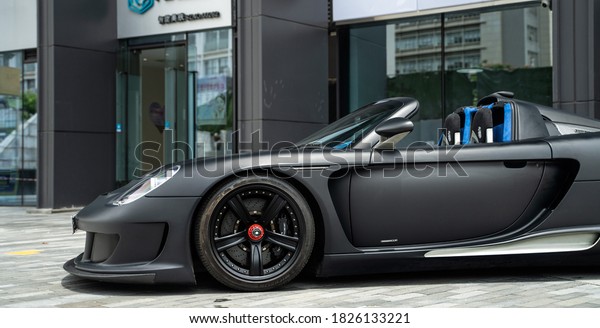
GTR Carrera
The 924 Carrera GTR race car weighed 930 kg and had a well-tuned 2.0 L I4 engine that produced 375 horsepower (280 kW; 380 PS). It was the 924’s final evolution in race trim (2,050 lb).
This resulted in a 4.7-second time from zero to sixty miles per hour (97 kilometers per hour) and a top speed of 180 miles per hour (290 kilometers per hour). Porsche achieved the sixth, twelfth, and thirteenth place in the 1980 24 Hour of Le Mans by three of its 924 GTR models.
The 924GTR rally car is also being developed, as are two additional GTRs (Miller and BF Goodrich). There were a total of 17 Carrera GTRs made (other sources state 19).
In 1981, Porsche Motorsports produced two 924 Carrera GTP prototypes with a new 2.5-liter I4 engine. (the “944GTP Le Mans”). ( To create 420 horsepower, this engine featured a single turbocharger K28 and four valves per cylinder) (313 kW; 426 PS).
This car finished ninth in the overall standings and spent the least amount of time in the pits of any other vehicle. The 944 platforms and the following 1987–88 944S 16V M44/40 engines are powered by this new 2.5-liter configuration engine.
Porsche 924 Turbo production ended in 1982, except the Italian market, which lasted until 1984. The upcoming 2.5 liter 944 will be taxed at a much higher rate due to limits on engines larger than two liters.
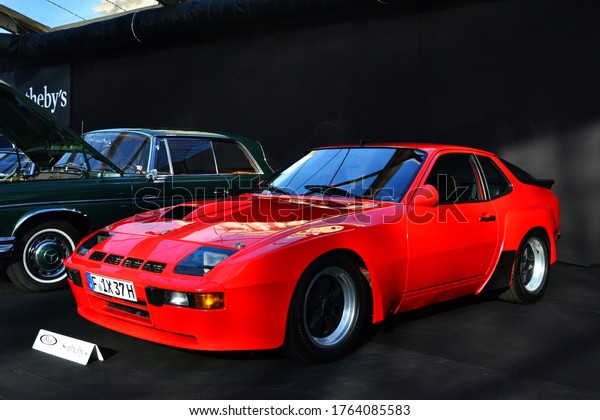
924 S
In 1984, VW decided to stop making the engine blocks used in the 2.0 L 924, putting Porsche in a problematic situation. As a result of its demise, Porsche was left without an affordable entry-level model that competed with the more expensive 944.
The 924 was outfitted with a somewhat detuned version of the 944’s 163 horsepower 2.5-liter straight-four, updated suspension, five-lug wheels, and 944 type brakes, while retaining the 924’s early interior design.
The 1986 924S, which had 148 horsepower, was the result. This is the first time the 924 has been re-introduced to the American market with a starting price of less than $20,000.
To keep pace with the previous year’s Le Mans-spec cars and the base model 944 (which had been detuned by 3 PS (2 kW; 3 bhp) for 1988), power was increased to 158 PS in 1988.
As a result, the S’ octane rating went from 91 to 95 thanks to the use of new pistons that increased its compression ratio from 9.7:1 to 10.2:1. Because of its reduced weight and more aerodynamic design, the 924S was marginally faster than the standard 944.
In the rear seats, three-point safety belts were added in 1988. Due to unfavorable exchange rates in the late 1980s, Porsche opted to concentrate its efforts on its higher-end models, discontinuing the 924S in 1989 and the base 944 the following year.
Annual license plates for cars from 2021-2011:
| MODEL | 2021 | 2020 | 2019 | 2018 | 2017 | 2016 | 2015 | 2014 | 2013 | 2012 | 2011 |
|---|---|---|---|---|---|---|---|---|---|---|---|
| PORSCHE 924 | 550 | 474 | 463 | 509 | 532 | 535 | 554 | 574 | 585 | 639 | 748 |
| PORSCHE 924 AUTO | 46 | 42 | 46 | 49 | 51 | 58 | 65 | 68 | 77 | 87 | 115 |
| PORSCHE 924 S | 124 | 110 | 119 | 121 | 130 | 133 | 143 | 141 | 148 | 168 | 186 |
| PORSCHE 924 S AUTO | 9 | 12 | 8 | 7 | 8 | 7 | 8 | 10 | 12 | 20 | 18 |
| PORSCHE 924 TURBO | 74 | 61 | 58 | 53 | 61 | 63 | 58 | 62 | 56 | 64 | 69 |
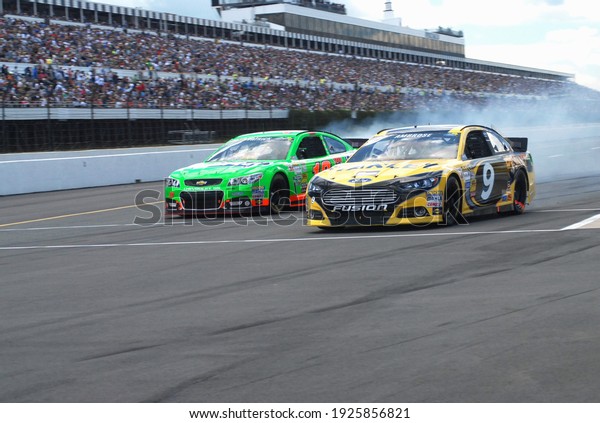
Motorsport
In the United Kingdom, the BRSCC and Porsche Racing Drivers Association conduct their own 924 racing series. Jeff May, who was the championship coordinator until his death on November 10, 2003, founded the Porsche 924 Championship in 1992.
In addition, Jeff May was a founder member of Porsche Club Great Britain. The 924S is also able to compete in the 944-Spec racing class in the United States.
Frequently Asked Questions(FAQs)
People asked many questions about “Porsche 924” Few of them were discussed below:
1. Is the Porsche 924 a collector’s item?
In fact, they are so uncommon that few people are aware of their existence, let alone understand why they are so special. Originally, the Porsche 924 was a poor man’s Porsche, similar to today’s entry-level Boxster.
2. Is a Porsche 924 a genuine Porsche?
From 1976 until 1988, the Porsche 924 was a sports automobile developed by Audi in Neckarsulm on behalf of Porsche AG of Germany. The 924 was the first roadgoing Porsche with a front-engine rear-wheel-drive configuration, even though the water-cooled, front-engined 928 grans Turismo was conceived sooner.
3. How excellent is a Porsche 924?
It’s practical, mechanically simple, and, needless to say, wears the proper symbol. While still in the shadow of the cars that came after it (the 944 and 968), If you want a Porsche but don’t want a Boxster, this might be a good time to buy a 924 that is in good condition.
4. Can you drive a Porsche 924 regularly?
There are plenty of Porsche 924, 928, and 911 models on the road today, but BMW cars from this era are a little tougher to come by, except the E24 6-Series, which is much older than it appears. We’re similarly blessed for choice when it comes to Swedish automobiles.
5. What is the value of a 1979 Porsche 924?
Prices for the Porsche 924 1979 starting at $4,100 for the Coupe 924. (base). Leaded Petrol is available for the Porsche 924 1979.
6. How dependable is the Porsche 944?
These cars can and will be highly dependable if regular maintenance is performed and no shortcuts are taken. With the 944’s value skyrocketing in recent years, there’s never been a better time to purchase and enjoy an affordable entry into vintage Porsche ownership.
7. Why is the Porsche 944 so inexpensive?
The 944 has remained reasonably priced due to several factors. Because it was front-engined and water-cooled, Porsche snobs turned their noses up at it. Four-cylinder engines don’t have the same emotional resonance as six-cylinder engines.
8. How can you tell the difference between a Porsche 924 and a Porsche 944?
The way the engine is installed in the front subframe is one of the most significant distinctions between the engines and, as a result, the two versions. The 944 engine is secured on an aluminum cross-member, which also houses the front control arms and steering rack. The 944 engine is mounted on two mounts on top of the cross member.
9. How long can a Porsche 944 be driven?
The device can survive well over 100k miles if properly maintained; the average maximum boost is 1.7-1.75bar. Inspect the engine and power steering for oil leaks; oil pressure should be 5 bar at speed and 2-2.5 bar at hot idle.
10. What is the most valuable Porsche?
The 5 Most Rare Porsches Ever Produced are:
-
Abarth Carrera GTL Porsche 356B (20/21 Units).
-
911 SC/RS Porsche Porsche 911 SC/RS Porsche 911 SC/RS Porsche 911 SC (20 Units).
-
Porsche 356 America Roadster 3 Porsche 356 America Roadster 3 (16 Units).
-
Porsche 964 Speedster Turbo-Look Porsche 964 Speedster Turbo-Look Porsche 964 Speedster Turbo-Look (15 Units).
-
Porsche 993 Turbo Cabriolet (Porsche 993 Turbo Cabriolet) (14 Units).
Conclusion
The Porsche 924 was initially a cooperative project between Volkswagen and Porsche. It was intended to be Porsche’s entry-level sports car. Despite being panned for its low performance, it became one of Volkswagen’s best-selling models. The 1981 and 1982 Turbos and 924S are gaining in popularity among collectors. The Porsche 924 was introduced in 1984 as an entry-level model for the Porsche 944. The 924 Carrera GTR was a heavily tuned version of the 2.0 L I4 used in all 924s. Good values start at $4,100 for the Coupe 924 (base).
